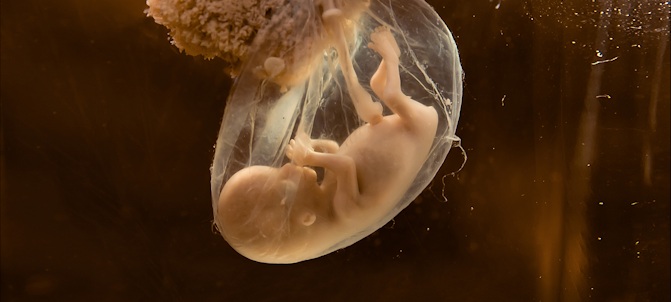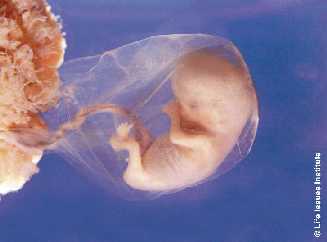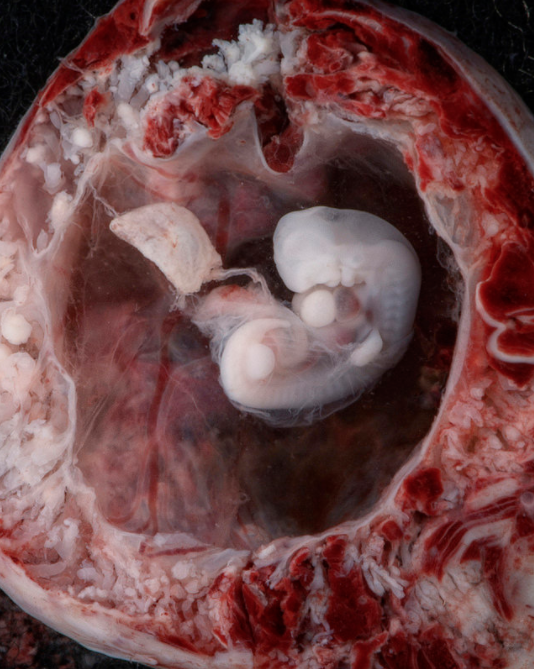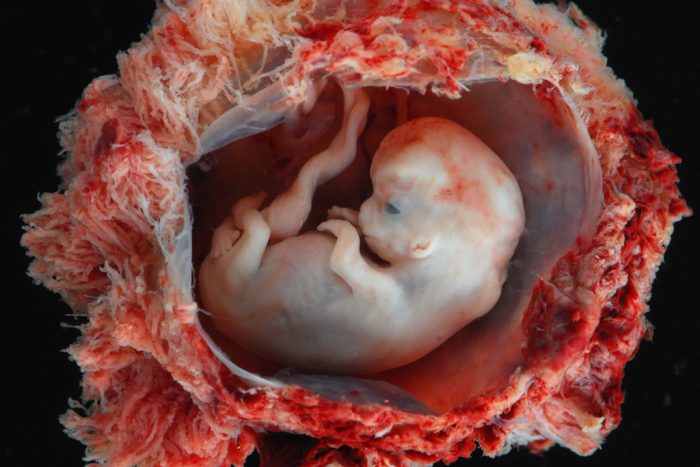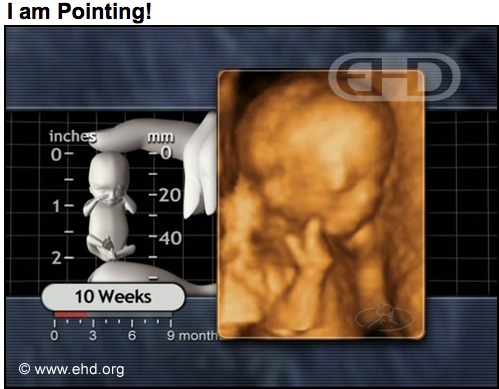With today’s modern technology and medical information, we have a real-time window into the womb. What happens to babies before birth – all the ways they move, grow, and change – is nothing short of amazing. The first trimester is full of developments that many pregnant mothers may not be aware of.
Here are just 12 scientific facts that happen to babies before they are born. These 12 facts demonstrate the uniqueness, value, and humanity of preborn children. What’s more, each of these 10 things occur in the first trimester – when approximately 90% of abortions in the U.S. occur.
Note: All dates given below are at the gestational age of the preborn child, that is, weeks from conception (fertilization). LMP dating would add approximately two weeks to each age.
1) Preborn babies have their own unique DNA
Science tells us the human embryo is a “developing individual” while in the womb. Physical changes occur quickly from the moment of fertilization.
Modern science indisputably recognizes the preborn child as a new human being. As Dr. Micheline Matthews-Roth of Harvard Medical School says: “It is scientifically correct to say that an individual human life begins at conception, when egg and sperm join to form the zygote, and this developing human always is a member of our species in all stages of its life.” Dr. Jerome Lejeune – the scientist who discovered Down syndrome – agreed: “Life has a very long history, but each of us has a very neat beginning – the moment of conception.” (More science on life’s beginning here.)
Recombinant DNA technologies, discovered after abortion was legalized throughout the U.S. indisputably prove that the unborn child “is a whole human being from the moment of fertilization, that all abortions terminate the life of a living human being, and that the unborn child is a separate human patient under the care of modern medicine.”
Countless medical textbooks – from various science specialties – agree. From the very first moment, a human being is a human being.
2) Organs begin to develop within three weeks
At two to three weeks, a baby’s brain is the “first organ to appear,” and the baby’s kidneys are present at only five weeks.
In fact by eight weeks, all of the baby’s organs are in place and only need time to become fully developed.
3) A baby’s heart begins to beat as early as 16 days, and is certainly by 22 days.
Here is a video of the baby’s heart beating at four weeks and four days.
According to The Endowment for Human Development, “[b]etween fertilization and birth, the heart beats approximately 54 million times…”
4) At four weeks, the baby’s facial features are becoming noticeable.
Her eyes are developing. What color will they be? Will they take mommy’s shape, or daddy’s? Her mouth is also beginning to form. At this age, the baby’s skin is present, and it covers her tiny body. The skin is so thin you can see through to her organs and blood vessels.
5) At five weeks, a baby’s circulatory system is developing, as well as the foundation for her hair, nails, and tooth enamel.
This period of time includes quick and fascinating growth, as the tiny child is changing quickly – right on track with normal human development.
6) Preborn babies react to touch
At six weeks, a baby will move away if his or her mouth is touched: “A light touch to the mouth area causes the embryo to reflexively withdraw its head.” The Endowment for Human Development has a video of a six-week-old baby responding to touch here.
D&C abortions are commonly performed when a baby is this age. Former abortionist, Dr. Anthony Levatino, describes exactly what happens in this type of abortion in the video at the bottom of this article.
7) Brainwaves are detected at six weeks
A preborn baby’s brainwaves can be measured at just six weeks. See the brainwaves for yourself here.
8) At six weeks, a preborn baby’s ear is already appearing
These ears are preparation for the baby’s ability to respond to sound. Recently, innovative scientists discovered that babies can respond to music at a mere 16 weeks gestation – far earlier than previously believed, and just three weeks after the first trimester ends.
9) Preborn babies play in the womb
At eight weeks, a baby can move his or her jaw and point her toes. Is this early practice for talking, eating, ballet or soccer?
10) Preborn babies yawn and suck their thumbs
At nine weeks, a preborn baby can suck his or her thumb. According to the Endowment for Human Development, most babies prefer to suck their right thumb!
At this age, plenty is going on. A baby’s vocal cords are forming, her bones are hardening, and her toenails and fingernails are emerging. See a video of a 10-week-old baby yawning here.
11) Preborn babies have fingerprints
At nine to 10 weeks, preborn babies develop fingerprints, which remain the same throughout the baby’s life. His or her permanent identification is already developing. Her tooth buds – another form of identification – can be seen at 10 weeks.
Watch a video and see a preborn baby’s fingerprints here.
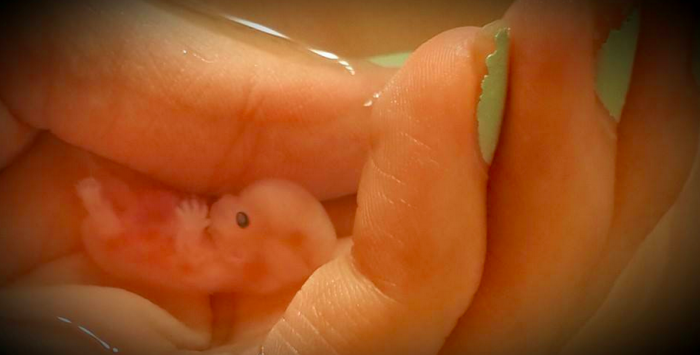
Annabelle, at 8 weeks, 5 days old. Her mother shared her beautiful story and photos here, illustrating the absolute humanity of all preborn children.
12) A preborn baby hides from abortion instruments
The video “The Silent Scream” (as well as other ultrasounds) captures the D&C abortion of a baby in her first trimester. Aspiration (Suction) D&C abortions are the most prevalent type of surgical abortion in the U.S., and they are commonly performed up to 13 weeks of pregnancy. Approximately 700,000 preborn children are killed using this type of abortion every year.
Former abortionist, Dr. Anthony Levatino, explains what happens, using medical animation:
The conversation about abortion is changing. This doctor has performed over 1200 abortions, and now he’s revealing what…
Posted by Live Action on Thursday, March 3, 2016
After seeing the abortion and the reaction of the baby on ultrasound, the abortionist in The Silent Scream revealed he never performed an abortion again:
“The abortionist was quite skilled, having performed more than 10,000 abortions. We discover that the resulting ultrasound of his abortion so appalled him that he never again performed another abortion.
The clip begins with an ultrasound of the fetus (girl) who is about to be aborted. The girl is moving in the womb; displays a heartbeat of 140 per minute; and is at times sucking her thumb. As the abortionist’s suction tip begins to invade the womb, the child rears and moves violently in an attempt to avoid the instrument. Her mouth is visibly open in a “silent scream.” The child’s heart rate speeds up dramatically (to 200 beats per minute) as she senses aggression. She moves violently away in a pathetic attempt to escape the instrument.
The abortionist’s suction tip begins to rip the baby’s limbs from its body, ultimately leaving only her head in the uterus (too large to be pulled from the uterus in one piece). The abortionist attempts to crush her head with his forceps, allowing it to be removed.”
Researchers note that a preborn baby may be able to feel pain as early as five weeks. After examining scientific resources and hearing medical testimony, a task force found that “(the necessary pieces) for pain detection in the spinal cord exists at very early developmental stages.”
For more on the beauty and facts of prenatal development, go here.
Editor’s Note: The information here has, in large part, been studied and documented by The Endowment for Human Development. EHD is “a nonprofit organization dedicated to improving health science education and public health” that has cooperated with National Geographic to produce a video about prenatal development.

